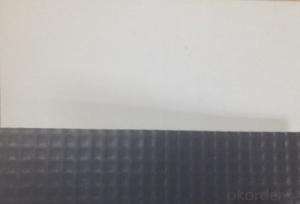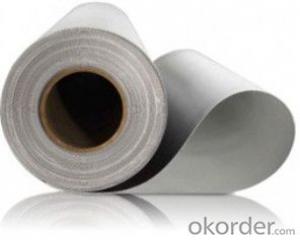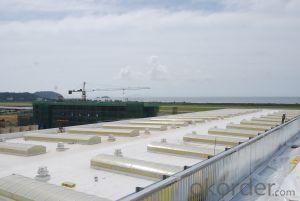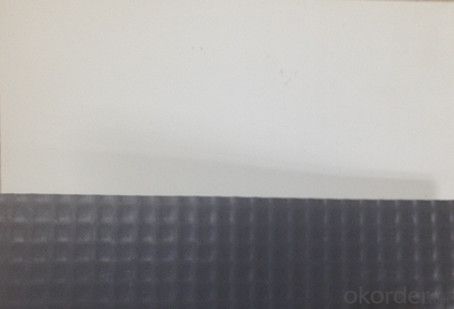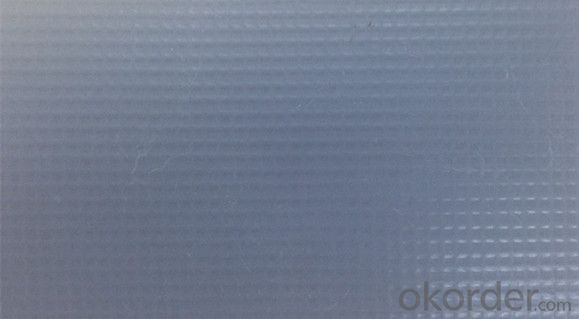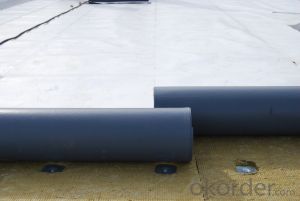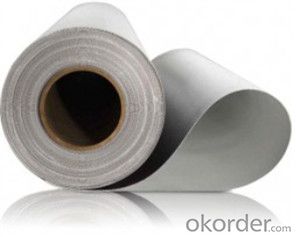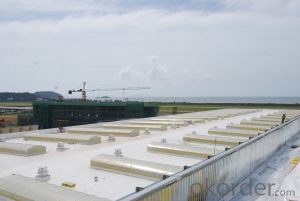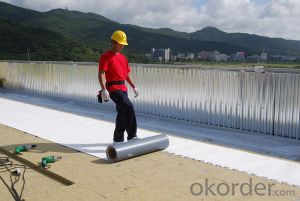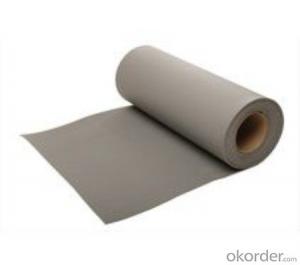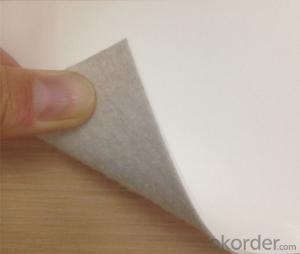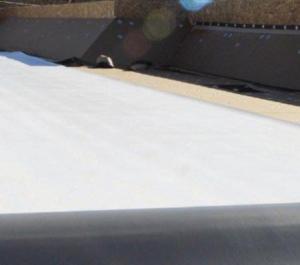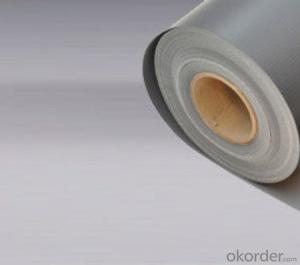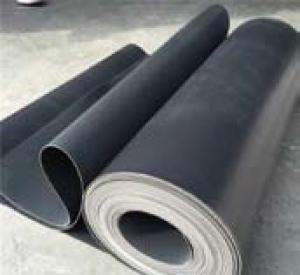TPO Waterproof Membrane with Polyester Mesh Reinforcement
- Loading Port:
- Shanghai
- Payment Terms:
- TT or LC
- Min Order Qty:
- 4000 m²
- Supply Capability:
- 400000 m²/month
OKorder Service Pledge
OKorder Financial Service
You Might Also Like
TPO Waterproof Membrane with Polyester Mesh Reinforcement
Product Profle
TPO membrane is a flexible Thermoplastic Polyolefin (FPO) roofing membrane made from the incorporation of a ethylene propylene rubber into a polypropylene matrix. The membrane is specifically formulated for long-term weather resistance without plasticizers.
We produce 4 types of TPO membrane to satisfy all the needs of different applications.
1.Polyester Fleece Backing Thermoplastic Polyolefin Waterproof Membrane
2.Polyester Mesh Reinforced Thermoplastic Polyolefin Waterproof Membrane
3. Homogeneous Thermoplastic Polyolefin Waterproof Membrane
4. Self adhesive TPO Membrane
TPO Waterproof Membrane with Polyester Mesh Reinforcement is a waterproofing sheet, consisting of thermoplastic polyolefin Compound resin materials as the base stock, reinforced with polyester mesh fabric. There have two kinds of thickness: 1.2mm and 1.5mm.
Advantages
● Weather resistance and durability; Excellent weld ability;
● No any crisp agents to prevent materials brittleness;
● Intermediate enhanced polyester mesh fabric to have high tensile strength, fatigue resistance and penetrating resistance suitable for mechanically attached roofing systems;
● Excellent the same high and low temperature resistance as rubber materials which can keep flexible at -50° C and keep mechanical strength in high temperature;
● Excellent chemical resistance to acids, bases, and restaurant exhaust emissions; Dimension stability;
● White-based light-color and smooth surface with high reflection, energy saving and anti-dust functions;
● Use heat welding for the seam areas to form a reliable seamless waterproof layer.
● Available in more than 9 colors.
Applications
● Various roofing waterproof projects, such as industrial and civil buildings,
● Mechanically attached waterproofing system.
Propoties
Item | Requirement | Test Method | ||
Thickness, min, mm | Sheet-overall | ≥1.0 | ASTM D6878 | |
Coating over fabric or scrim, weathering side only | ≥0.305 | ASTM D751 | ||
Breaking strength, min, N | ≥976 | ASTM D751 | ||
Elongation at reinforcement break, min, % | ≥15 | ASTM D751 | ||
Tearing strength,min, N | ≥245 | ASTM D751 | ||
Brittleness point, max, °C | ≤-40 | ASTM D2137 | ||
Ozone resistance | no cracks | ASTM D1149 | ||
Properties after heat aging | Breaking strength, % min | ≥90 | ASTM D573 | |
Elongation at reinforcement break, % min | ≥90 | ASTM D573 | ||
Tearing strength, % min | ≥60 | ASTM D573 | ||
Weight change (mass), max % | ≤±1 | ASTM D573 | ||
Linear dimensional change, max, % | ≤±1 | ASTM D1204 | ||
Water absorption, max, mass % | ≤±3.0 | ASTM D471 | ||
Factory seam strength, min, N | ≥290 | ASTM D751 | ||
Weather resistance | Visual inspection | - | ||
Packaging
Thickness | Roll Size | Rolls / Wooden Crate | Wooden Crate / 20’ Container |
1.2 mm | 15 m2 | 25 | 20~25 |
20 m2 | 25 | ||
30 m2 | 25 | ||
1.5 mm | 15 m2 | 25 | |
20 m2 | 25 | ||
30 m2 | 23 |
Above quantities are indicative only. We can produce it according to your demands.
Storage
TPO material should be stored in well-ventilated place and avoid being exposed to the sun or rain. The temperature in stored places can not be higher than 45° C. It only can be put horizontally in five-level. It has to be avoided acid, alkali, oil and organic solvents. The shelf life is 1 year.
Transportation
TPO material should avoid inclination or lateral drift during transportation. When necessary, covering with felted fabric.
Application System
We not only provides TPO waterproofing membrane, but also dedicates to integrated roofing systems. TPO single ply roofing waterproof system includes mechanically attached roofing system, fully adhered roofing system and ballasted roofing system.
Application Methods
● For Mechanically Attached Roofing System
Before application, spread TPO membranes on substrate in advance. Install TPO membranes perpendicular to steel deck ribs on the substrate without distortions according to the flange. The overlapping width is 120 mm. The minimum overlapping distance of membrane short side direction is 50 mm. Fasteners are installed according to designed position. Hot-air welding is adopted for laps with 40 mm welding width.
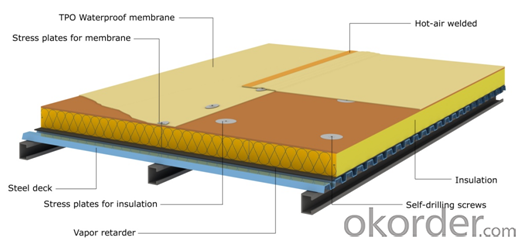
Attentions
● TPO membranes reflect heat and light, wearing protective clothing (long-sleeved shirt, long-barreled trousers), and wearing a filter to protect the skin and eyes from UV-induced damage.
● Security measures for roof perimeter are necessary when application. Sheet surface is slippery when wet, taking care to avoid slide.
● Sealants and adhesives are flammable containing solvents. They will be dangerous when exposure to heat, even have the possibility to catch fire and explode.
● Sealants, adhesives, cleaners should be avoided contacting with skin and eyes.
● No smoking during application.
FAQ
1. What’s your production ability of TPO membrane per year?
We own the largest EPDM production line in China. Our product ability of TPO membrane reaches 500million square meters.
2. How's your products quality?
Our TPO is with the top quality at home and abroad. Our quality is much higher than Chinese standard, they can satisfy the certification of CE, GOST-R, FM.
3. What's the service life of your TPO membrane?
The service life of our TPO membrane is more than 50 years.
4.What's your MOQ?
Our MOQ is 4000M2.
5. Can you provide free of charge samples for testing quality?
Yes, we’re very glad to send you free of charge samples for checking. You just need to pay for the freight cost.
6. How do you protect TPO membrane in transportation?
We package TPO rolls by PE bag, then 20~25 rolls will be packed into one big wooden crate.
7. Can you customize TPO membrane?
Yes, we’re very glad to customize TPO membrane according to your requirement. We can do more than 9 colors, and customize the thickness and width according to your requirement.
Photos
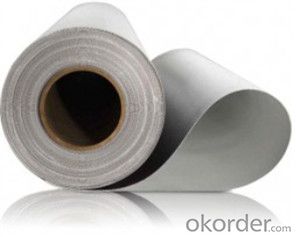
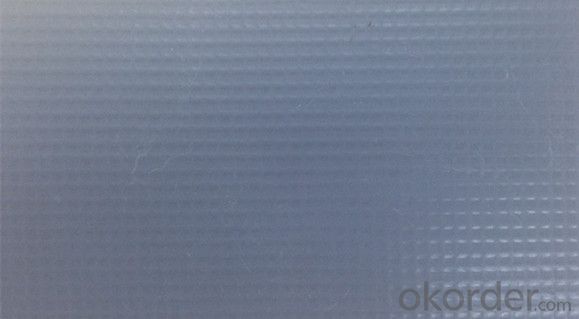
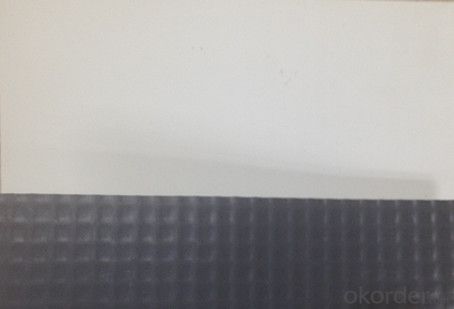
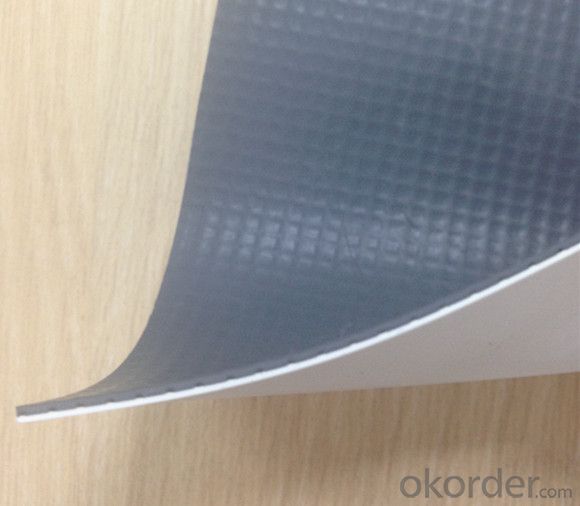
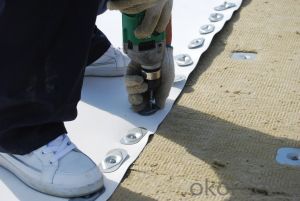
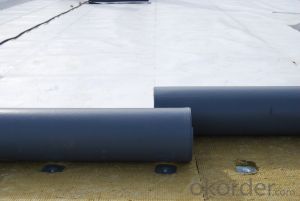
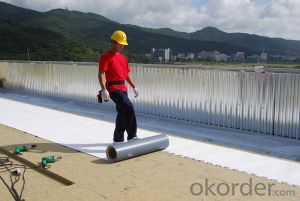

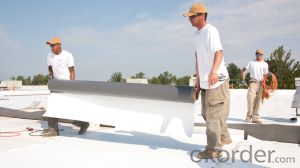
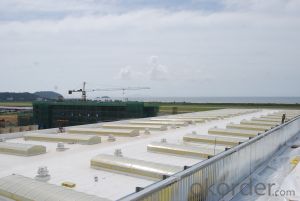
- Q: Can a waterproofing membrane be used in roofs?
- Roofs can indeed benefit from the use of a waterproofing membrane. It's a widely employed technique for safeguarding roofs against water-related harm. Typically composed of robust materials like rubber or modified bitumen, this membrane is applied to the roof's surface to establish a barrier that prevents water from seeping through. As a result, leaks and potential damage are averted, as this protective layer stops water from penetrating the roof's underlying structure. Waterproofing membranes are particularly advantageous for flat or low-sloped roofs, where water accumulation is prone to causing issues. Moreover, these versatile membranes can be utilized on diverse roofing materials, including concrete, metal, and asphalt, making them suitable for various roof types. Overall, incorporating a waterproofing membrane into roofs effectively enhances their durability and longevity, while ensuring dependable protection against water infiltration.
- Q: Are there any specific safety precautions to consider when installing a waterproofing membrane?
- When installing a waterproofing membrane, there are various safety precautions to consider. To begin with, it is crucial to ensure that the installation team uses all necessary personal protective equipment (PPE). This may incorporate gloves, safety glasses, and appropriate footwear to prevent injuries or exposure to dangerous substances. Moreover, it is essential to work in a well-ventilated area to avoid inhaling fumes or vapors emitted during the installation process. If working in a confined space, it is necessary to take proper measures to guarantee sufficient ventilation and use suitable respiratory protection if needed. Furthermore, it is vital to adhere to the manufacturer's instructions and guidelines for the specific waterproofing membrane being installed. This involves understanding any potential hazards linked with the product, such as flammability or toxicity, and taking necessary precautions to prevent accidents or exposure. Another safety consideration is to make sure that the installation area is appropriately prepared before commencing the process. This might entail clearing any debris, cleaning the surface, and addressing any potential hazards or obstacles that could pose a risk to the installation team. Lastly, it is important to have a designated safety plan in place, including emergency procedures and easily accessible first aid kits in case of accidents or injuries. Regular safety inspections and monitoring throughout the installation process are also recommended to promptly identify and address any potential safety risks. By adhering to these safety precautions, the installation of a waterproofing membrane can be carried out securely and effectively, minimizing the risk of accidents or injuries.
- Q: Can waterproofing membranes be used on parking decks?
- Indeed, parking decks can benefit from the application of waterproofing membranes. Given their exposure to diverse weather conditions and constant vehicular movement, water infiltration and subsequent damage are potential concerns. To combat this, waterproofing membranes act as a safeguard, effectively blocking water from seeping into the structure and causing deterioration. These membranes are engineered to withstand significant loads and resist the harmful effects of automotive fluids, making them an optimal choice for parking decks. By implementing waterproofing membranes, the lifespan of the parking deck can be prolonged, minimizing the necessity for expensive repairs and guaranteeing the safety and integrity of the structure.
- Q: Can a waterproofing membrane be used for a basement wall?
- Yes, a waterproofing membrane can be used for a basement wall. Waterproofing membranes are effective in preventing water penetration and can help to keep the basement dry by creating a barrier against moisture.
- Q: Are there any specific maintenance requirements for a waterproofing membrane?
- Yes, there are specific maintenance requirements for a waterproofing membrane. Regular inspections should be conducted to check for any signs of damage or deterioration, such as cracks or leaks. Any debris or standing water should be promptly removed to prevent potential damage. Additionally, it is important to follow the manufacturer's guidelines for cleaning and maintenance, which may include periodic cleaning with mild detergents and avoiding the use of harsh chemicals or abrasive cleaning tools.
- Q: Can a waterproofing membrane be used in areas with high levels of moisture and humidity?
- Areas with high levels of moisture and humidity can benefit from the use of a waterproofing membrane. These specialized membranes are designed to safeguard surfaces against water infiltration, making them an excellent choice for moisture-rich environments. Constructed from materials such as rubber, PVC, or bitumen, these membranes possess water-resistant properties that effectively prevent water from permeating through. Some waterproofing membranes even offer additional features, such as vapor barriers or breathable qualities, enabling them to be utilized in areas with elevated humidity levels. It is crucial, however, to select the appropriate type of waterproofing membrane that aligns with the specific conditions and requirements of the area to guarantee optimal performance and durability.
- Q: Can a waterproofing membrane be installed by a homeowner, or is professional installation necessary?
- While it is technically possible for a homeowner to install a waterproofing membrane, professional installation is highly recommended. Waterproofing membranes require specialized knowledge and expertise to ensure proper installation and effectiveness. Professionals have the necessary skills, tools, and experience to address potential challenges and ensure a long-lasting and reliable waterproofing solution. Additionally, professional installation often comes with warranties and guarantees, providing homeowners with added peace of mind.
- Q: Can a waterproofing membrane be used to repair existing water leaks or damage?
- Yes, a waterproofing membrane can be used to repair existing water leaks or damage. It acts as a barrier to prevent water from penetrating through surfaces, effectively sealing off any existing leaks or damage and preventing further water intrusion.
- Q: Can a waterproofing membrane be used for shower or bathroom installations?
- Yes, a waterproofing membrane can definitely be used for shower or bathroom installations. In fact, it is highly recommended to use a waterproofing membrane in these areas to prevent water damage and leakage. A waterproofing membrane is a thin layer of material that is applied to the walls, floors, and even ceilings of showers and bathrooms to create a barrier against moisture. This membrane acts as a waterproof barrier, preventing water from seeping through the tiled surfaces and into the underlying structures, such as the walls or subfloor. By using a waterproofing membrane, you can ensure that your shower or bathroom remains watertight and protected from water damage, mold growth, and potential structural issues. It is important to follow the manufacturer's instructions and guidelines when installing a waterproofing membrane to ensure its effectiveness and longevity.
- Q: Can a waterproofing membrane be used for foundation walls and footings?
- Yes, a waterproofing membrane can be used for foundation walls and footings. A waterproofing membrane is a thin layer of material, typically made of rubberized asphalt or polymer-modified bitumen, that is applied to the exterior surface of foundation walls and footings to prevent water penetration. It acts as a barrier, preventing water from seeping into the foundation and causing moisture-related issues such as dampness, mold, and structural damage. The waterproofing membrane is typically applied to the foundation walls and footings during the construction phase, either before or after the concrete is poured. It is important to ensure that the membrane is properly installed and sealed to provide effective waterproofing. The membrane is also commonly combined with other waterproofing techniques such as drainage systems and sump pumps to provide comprehensive protection against water intrusion. Using a waterproofing membrane for foundation walls and footings is a common practice in construction, especially in areas with high water tables or heavy rainfall. It is an effective and reliable method to prevent water damage and increase the longevity of the foundation. Properly waterproofing the foundation walls and footings is essential for maintaining a dry and structurally sound building.
Send your message to us
TPO Waterproof Membrane with Polyester Mesh Reinforcement
- Loading Port:
- Shanghai
- Payment Terms:
- TT or LC
- Min Order Qty:
- 4000 m²
- Supply Capability:
- 400000 m²/month
OKorder Service Pledge
OKorder Financial Service
Similar products
Hot products
Hot Searches
Related keywords
